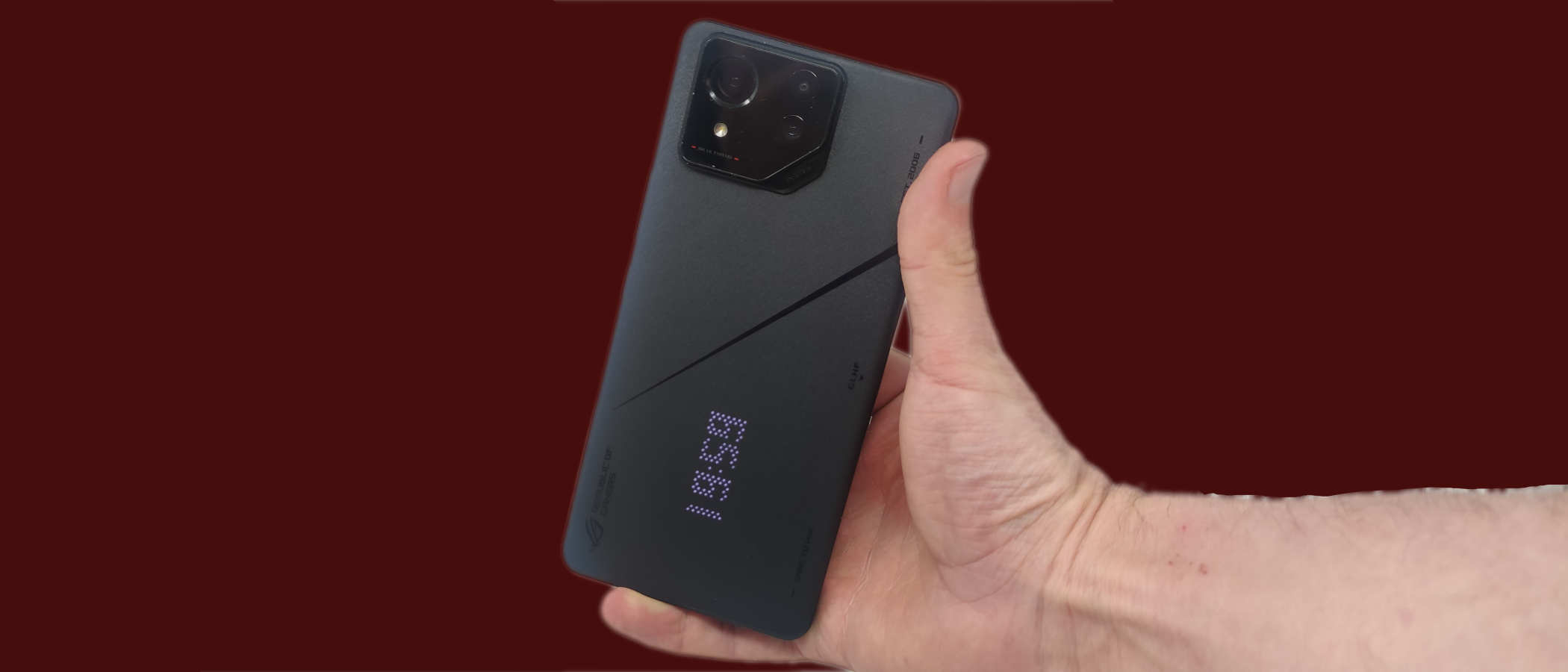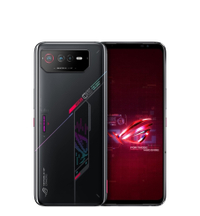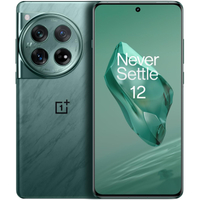TechRadar Verdict
The Asus ROG Phone 8 ticks a few boxes for gamers: it has a top-end chipset, a high refresh rate display and useful software tools. However, issues with its design make it tricky to use for actual gaming, and it costs a lot more than it really should.
Pros
- +
Powerful chipset
- +
Good-looking display
- +
Handy software features
Cons
- -
Unreliable side triggers
- -
Unreasonably high price
- -
Poor speaker placement
Why you can trust TechRadar
Asus ROG Phone 8 two-minute review
The gaming phone market used to be an exciting and competitive niche, with companies innovating with newer and weirder ways to make their handsets great for mobile gaming. My use of the past tense there is intentional, as the Asus ROG Phone 8 is a sign of the times.
With Lenovo giving up its short-lived Legion Duel line in 2021, and my personal favorites, Black Shark, not having released a device since 2022, Asus doesn’t have much competition when it comes to producing the best gaming phone, and as a result, it doesn’t seem to be trying.
On paper, the Asus ROG Phone 8 looks like a decent gaming phone. It has a high refresh rate display, the newest and fastest chipset, and extra gaming features that you don’t find on most Android mobiles. And, to an extent, it is good for playing mobile games.
The ROG had no problem loading up the top graphical settings on any game I tested, and it easily ran higher refresh modes in the few games that offer it. Plus, it gives you lots of customization over the power allotment, so you can focus on latency, graphics, battery management and more – really useful tools for gamers on the go.
Asus’ Android fork is also one of the easiest to use I’ve seen in a gaming phone – it’s nice and clean, but with a few added extra features for gamers like customization modes. There’s no bloatware either, which isn’t something you can say about many Android phones.
While I'm listing positives, I also want to commend the camera. It's not quite iPhone-level, but it's definitely the best I've seen on a gaming phone, given that manufacturers working in this niche rarely spare a thought for photography. It even has a zoom camera, which is quite the rarity these days!
However, I came out of my time with the Asus ROG Phone 8 not quite sold on its gaming chops beyond all that power. Gaming tech companies don’t seem to want to acknowledge the fact that there’s a lot more to making a good gaming phone than performance; case in point, the ROG Phone 8.
Instead of physical triggers, the ROG Phone 8 has ‘Air Triggers’, or haptic areas that you can tap to pre-mapped functions. These are finickity to use, requiring pronounced motions that take more time and attention than simply pressing on-screen buttons. Plus they’re quite buggy, sometimes not triggering and other times getting stuck.
Asus has also made the mistake of placing the side-mounted speakers right where your hand will be when you’re holding the mobile horizontally to game. I kept blocking sound when playing games, which was infuriating.
I imagine Asus hopes gamers will use the ROG phone alongside one of its peripherals, but expecting consumers to buy extra tech brings into view another issue with the ROG Phone 8 – it’s really expensive! Costing $1,099 / £949 (roughly AU$1,600), it’ll set you back more than many top-end flagships including the OnePlus 12, Google Pixel 8 or Xiaomi 14.
More importantly, the ROG Phone 8 costs a lot more than the Nubia Red Magic 9 Pro, which is its big rival in the gaming space, and I don’t think you’re getting your money’s worth with the price hike.
If the gaming phone space was more competitive, this price tag would get Asus laughed out of the room. As it stands, the high cost of the ROG Phone 8 and the lack of refinement in its gaming chops make it hard to recommend.
Asus ROG Phone 8 review: price and availability
- Released in January 2024
- Costs $1,099 / £949 (roughly AU$1,600)
- Has two more premium alternatives: Pro and Pro Edition
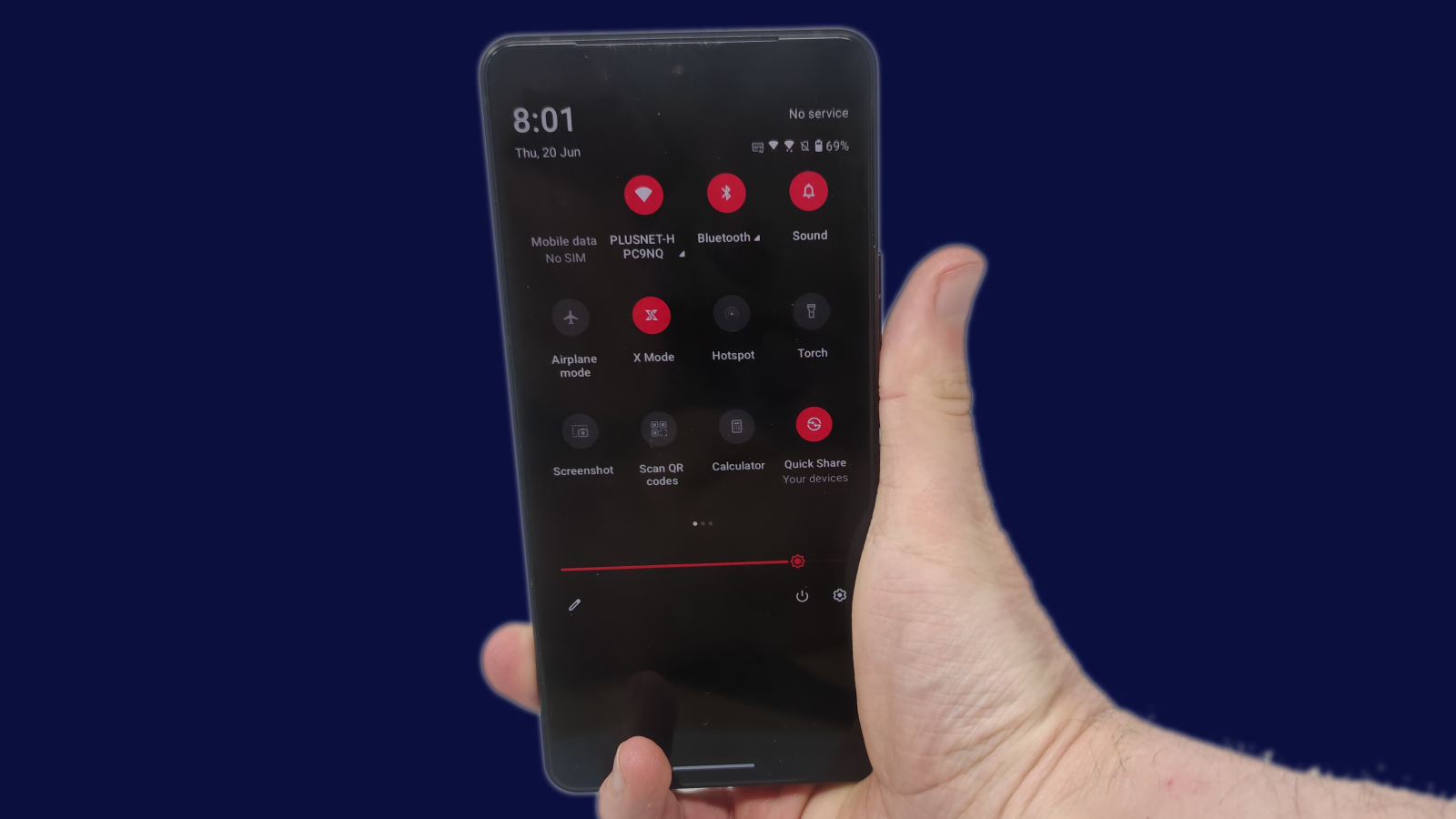
The Asus ROG Phone 8 was announced and released alongside the Asus ROG Phone 8 Pro and Asus ROG Phone 8 Pro Edition (yes, it's confusing) in January 2024, as the newest update in this long-running line of mobiles.
The ROG Phone 8 costs $1,099 / £949 (roughly AU$1,600), so it’s by no means a cheap phone; it’s barely more affordable than the Pro model, which starts at $1,199 / £1,099 (roughly AU$1,750) but gets you more power and storage. The aforementioned Pro Edition goes for an even higher $1,499 / £1,299 (around AU$2,200).
These prices put the ROG Phone 8 family as basically the most expensive gaming-focused phones you can buy right now; the Red Magic 9 Pro costs $649 / £579 (around AU$1,100) and offers similar specs, and with Black Shark seemingly out of the market, you’ll have to look outside the gaming phone realm for other competitors.
The ROG Phone 8 isn't exactly offering value for money either. While it’s certainly got impressive internal specs that make gaming a breeze, so do other phones that cost much less money. This phone’s asking price is especially egregious when taking into consideration many of the issues we'll get to later.
In the 'Also consider' section of this review, you’ll find recommendations for other gaming phones that offer better value for money, at different price tiers.
- Value score: 2.5 / 5
Asus ROG Phone 8 review: specs
Let's check out what we're working with before we dive into the phone, section by section.
| Header Cell - Column 1 | |
|---|---|
| Dimensions: | 163.8 x 76.8 x 8.9mm |
| Weight: | 225g |
| Screen: | 6.78-inch 20:9 FHD+ (2400x1080) 165Hz AMOLED |
| Chipset: | Qualcomm Snapdragon 8 Gen 3 |
| RAM: | 12GB |
| Storage: | 256GB |
| OS: | Android 14 |
| Primary camera: | 50MP, f/1.9 |
| Telephoto camera | 32MP f/2.4 |
| Ultrawide camera | 13MP f/2.2 |
| Front camera: | 32MP f/2.5 |
| Audio: | Stereo speakers, 3.5mm headphone jack |
| Battery: | 5,500mAh |
| Charging: | 65W wired, 30W wireless |
| Colors: | Phantom Black, Rebel Grey |
Asus ROG Phone 8 review: design
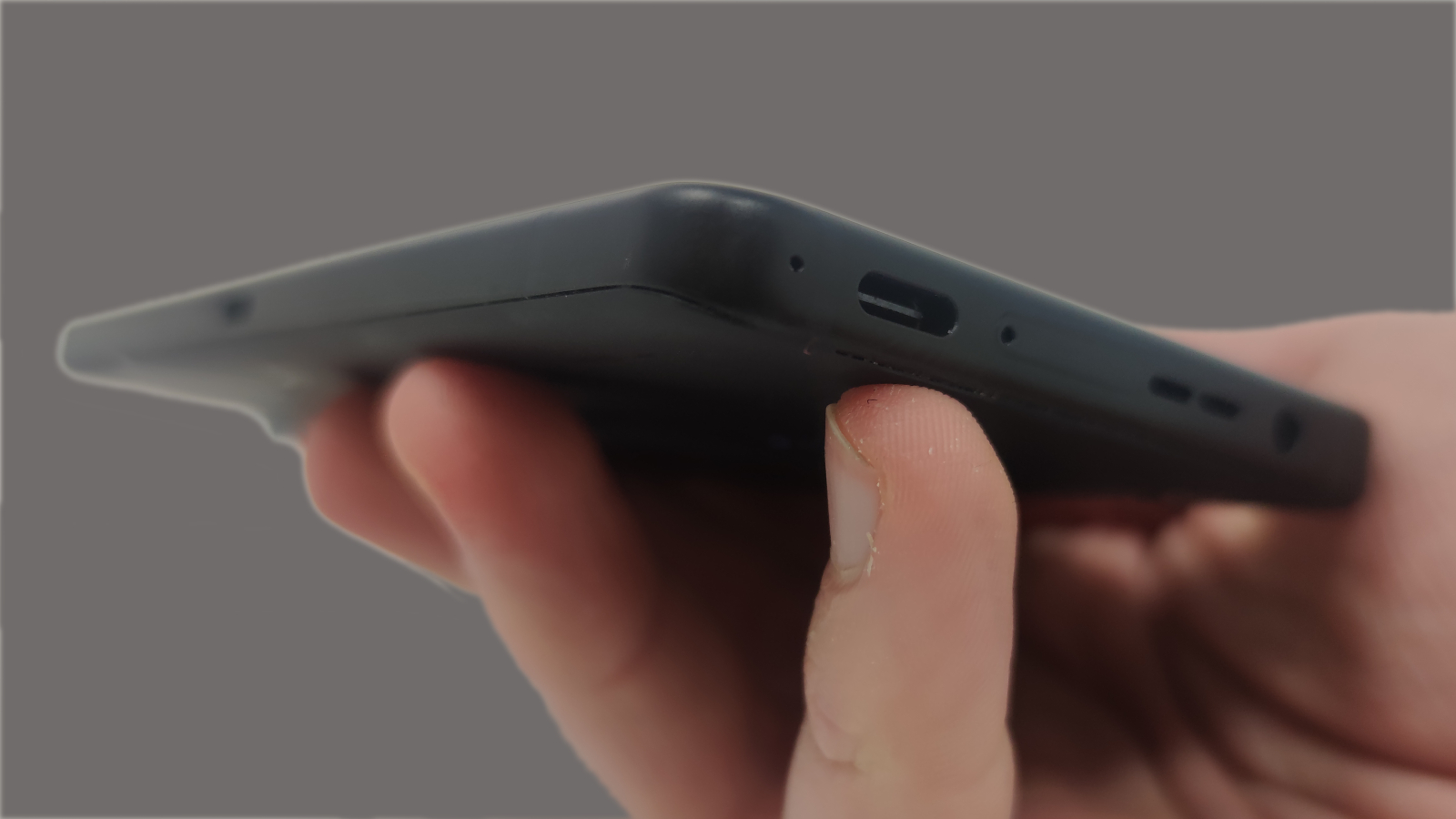
- Big phone which stretches the hand
- Black and gray options
- Two USB-C ports as well as Air Triggers and 3.5mm jack
Asus’ ROG Phones have never indulged in the garish design excesses of other gaming phones, but even for its own standards the ROG Phone 8 looks a lot like a ‘normal’ Android phone. No bold ridges, no angular blocks, no big triggers or nozzles.
It’s big for sure, with its 163.8 x 76.8 x 8.9mm body sure to stretch your hand. But at 225g it’s no heavier than it looks – you can game for long amounts of time, but it won’t replace your gym weights routine. Your fingers, though, might need the occasional rest.
You can pick the phone up in black or gray, and we tested the former. There’s an LED panel on the back, but I didn’t actually realize until I came to write this review – you have to find the option to turn it on buried deep in a menu. More on that in the software section later.
The camera bump on the back of the ROG sticks out a fair way, so the phone doesn’t sit flat on a table – that’s par for the course in many phones though. It’s prone to scuffing too, as you might notice in some of the review pictures.
A bit more interesting is the fact that the phone has two USB-C ports, which is something you see occasionally in gaming phones. This is so that you can charge the ROG Phone 8 while gaming, without a cable poking out at an inopportune angle. One of these ports is on the left edge of the mobile, and the other is on the bottom edge, joined by a 3.5mm headphone jack.
On the right edge of the phone are a power button and volume rocker, as well as two ‘Air Triggers’ as Asus calls them. These are basically haptic spots that you can tap to enact a certain function when gaming, so you can map them to, say, aiming and shooting a gun.
Triggers are nothing new for gaming phones, but I wasn’t a fan of the Rog Phone 8’s. They need a firm press to select, with these pronounced gestures taking more time and requiring more effort than other gaming mobile triggers I’ve tested – in fact, I think it slowed down my reaction time in gaming, rather than speeding it up. In addition, the triggers sometimes wouldn’t function, and other times would stay held down when I pressed them once, causing me to repeatedly shoot my gun. For obvious reasons, this was annoying, and I slowly stopped using the triggers.
The ROG Phone 8 has an IP68 rating – this means it’s protected against dust and brief submersion in water, in case you decide to game in the bathtub. The phone has a glass front and back, though, so it might not survive a big drop.
- Design score: 3.5 / 5
Asus Rog Phone 8 review: display
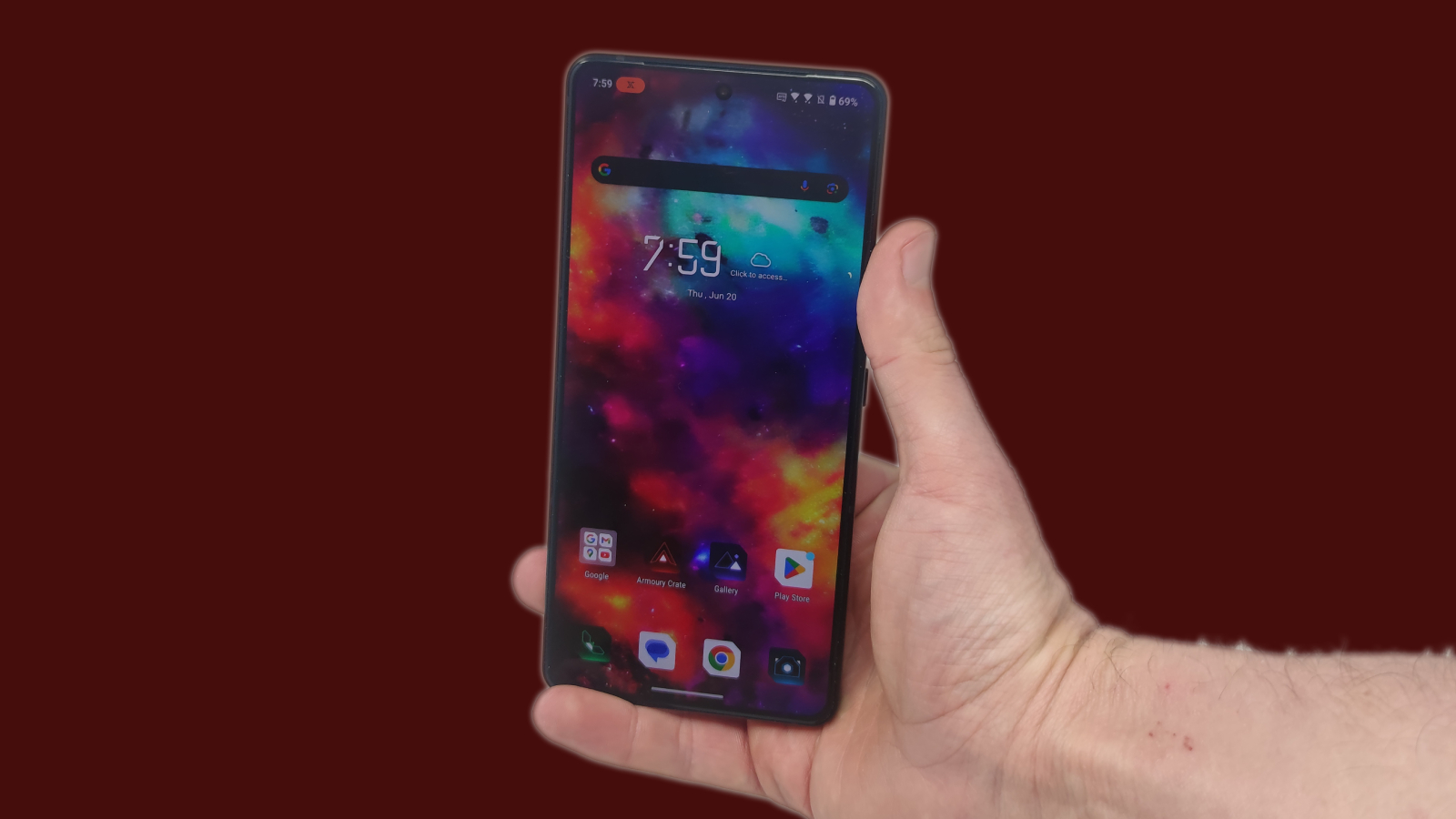
- Giant 6.78-inch screen
- Super fast 165Hz refresh rate
- FHD+ resolution
With its 6.78-inch display, the ROG Phone 8 is a chunky boy, but that’s no surprise given that all of its predecessors since the ROG Phone 5 have been this exact same size (the ROG Phone 8 Pro, too).
The resolution is 1080 x 2400, or FHD+ – that’s the standard for most Android phones, and while it’s not the 2K or 4K of select rivals on the market, it’s the resolution that most games output at, so we’re not subtracting points for that.
It’s a good-looking display, with an AMOLED panel providing punchy colors, HDR10 boosting the contrast of images, and 2500 nits max brightness lighting up the dark side of the moon, it looks great for video streaming or gaming.
On the topic of gaming, the phone's 165Hz refresh rate is great for the select games that support high refresh rates. Not many do, but 120Hz is a lovely extra perk nonetheless.
- Display score: 4 / 5
Asus Rog Phone 8 review: software
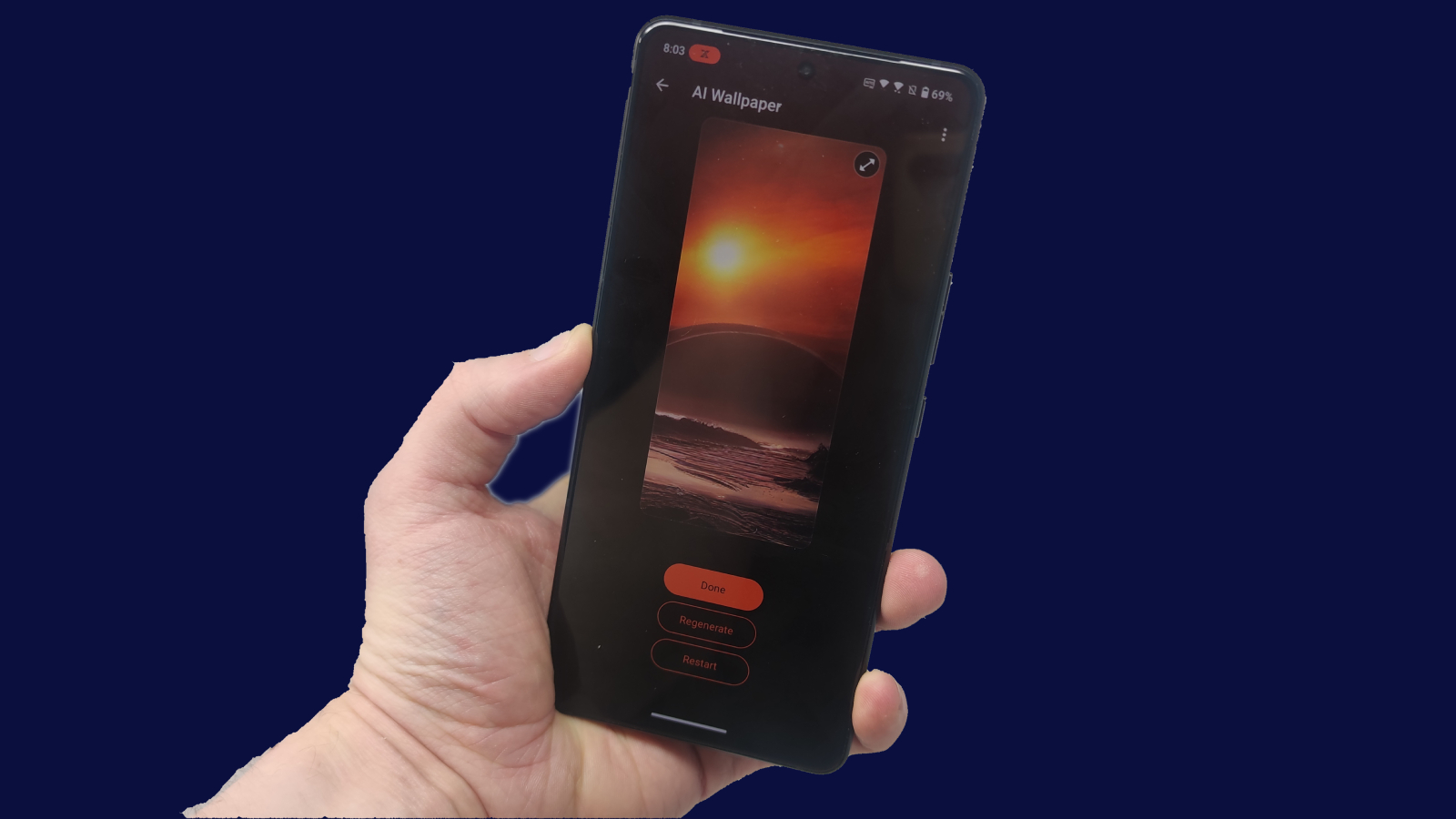
- Android 14 with lots of Asus twists
- Clean software with customization options
- AI wallpaper generator may prove divisive
The Asus ROG Phone 8 comes with Android 14, and a home-brewed user interface laid over the top. It’s lathered with ‘gamer aesthetics’ – expect darker tones, minimalist icon designs (check out the camera icon in the review images!) and app icons with an irregular hexagonal shape.
Beyond the looks, this software feels quite similar to stock Android, so it’s pretty clean. Apps are stored in an app drawer, and you can swipe down to get access to quick settings.
Asus has added a few of its own apps and functions that are tailored to gamers. These include a tutorial in how the gaming features work when you first boot up the phone (which is cool but makes the set-up processes incredibly time-consuming), Armory Crate, which gives you quick access to all your games, and an in-game swipe-up system that lets you fiddle with loads of pertinent settings. All of these features are handy extras to gamers, though I stopped using Armory Crate when I realized that it was creating an extra step between me and a game.
The ROG Phone 8 has a fair few customization options to personalize the always-on display, icon shapes, various animations and the font. You can also customize the LED panel on the back; to do so, you have to find the AniMe Vision feature buried in the settings menu (or Armory Crate). This lets you choose conditions for the screen to light up: on an incoming call, when you’re taking a picture, a camera countdown, a charging indicator and so on, with select graphics to indicate what’s happening. It’s definitely less garish than many gaming phone LED panels.
One feature of the Asus ROG Phone 8 that’ll either drive you crazy with glee or rage, depending on your views on the ethical dilemma of generative AI, is the AI Wallpaper feature. The phone has a built-in AI image generator, so you can create a wallpaper based on one of a few set themes including ‘Space’, ‘Cyberpunk’ and ‘Sci-Fi’ – you may be noticing a theme here.
I used this feature to make a few different wallpapers, and they were all suitably distinct, but they also had all the issues common to AI-generated images that you’ve seen and laughed at in the past. The phone does not, as I initially thought, generate you a new wallpaper each day. That’d be a cool feature, but no. The ROG Phone 8 just makes you one, and if you want a new one, you’ll need to go into the settings of the phone and re-generate it.
- Software score: 3.5 / 5
Asus Rog Phone 8: cameras
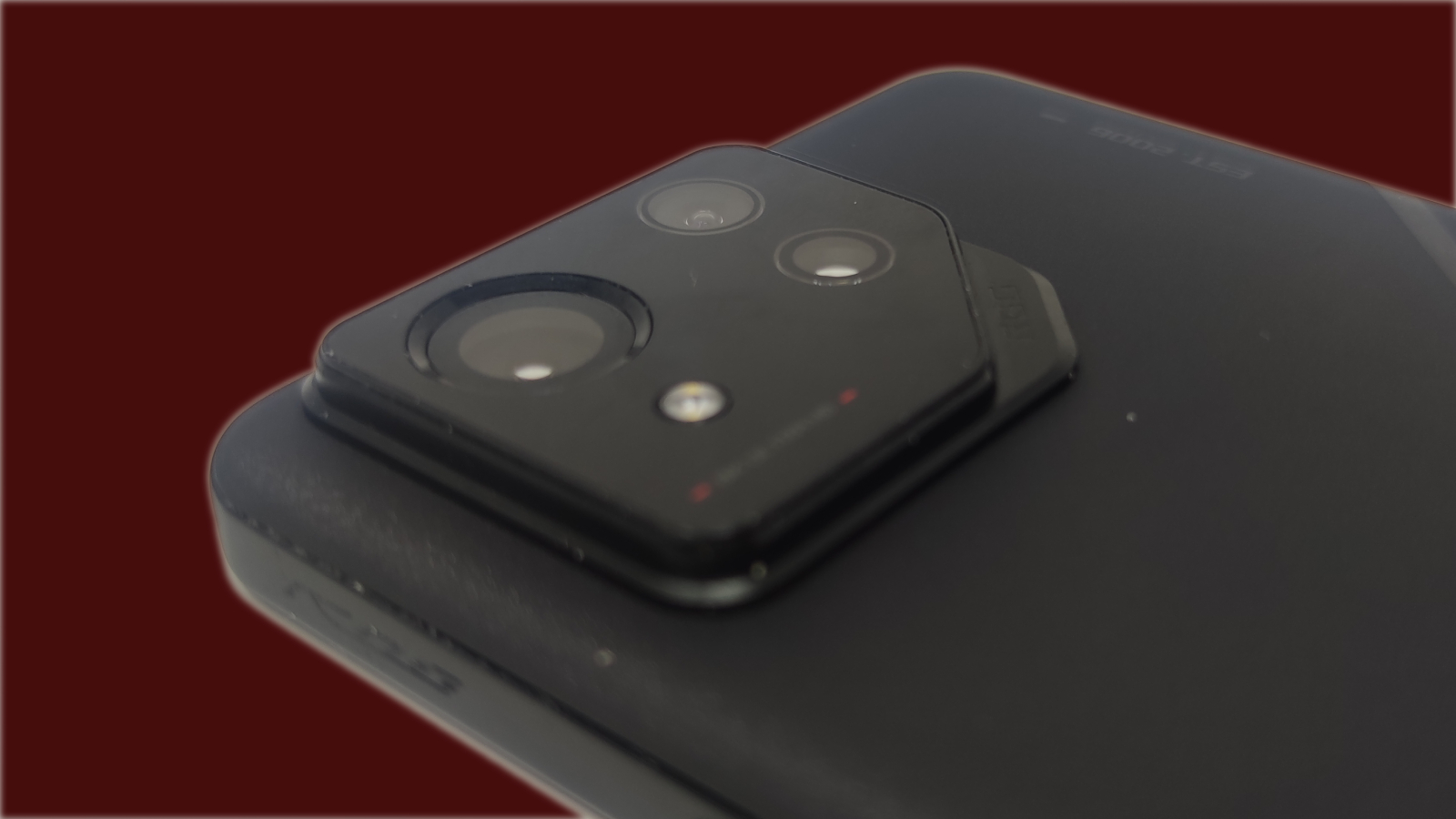
- 50MP main, 32MP telephoto, 13MP ultra-wide cameras
- 32MP selfie camera on the front
- Standard array of phone camera modes
Given that the focus of the Asus ROG Phone 8 is gaming and performance, I didn't expect great things from the device's camera, but I was pleasantly surprised. It's not going to replace your top-end iPhone, but it'll hold its own.
The main camera is a 50MP f/1.9 snapper with OIS that uses a gimbal, something that's not common in smartphones. Standard (1x zoom) pictures taken on the phone are quite bright and colorful, particularly in well-lit environments, but don't discount them in dimmer places either.
When you take a picture, its resolution is only 12.5MP, with the camera employing pixel-binning from the 50MP. Unlike in most phones, I couldn't find a way to turn on full-res mode, so if you blow up the below camera samples, you'll see them losing quality quickly.
If you want a wider scope, you can jump to the second camera, a 13MP f/2.2 snapper with a 120-degree ultrawide lens. This offered a surprising amount of consistency in terms of color and quality compared to pictures taken on the main camera, so you can widen your shot without worrying about contending with a different color profile. In the camera section below, you can see a shot of London's Canary Wharf at different zoom levels to show this.
Going the other way, you can get closer to a subject with the 32MP f/2.4 snapper with a 3x zoom telephoto lens. Zoom lenses like this are disappointingly rare in all mobiles nowadays, so I was really surprised to see one in a gaming phone of all things, but it really elevates the photography experience.
As with the ultra-wide camera, the color profile consistency continues on this lens (something you can't guarantee in smartphones) and it has a decent amount of quality at higher zoom levels.
You can exceed 3x with digital zoom, which is basically cropping of the zoomed-in picture, up to 30x. Results for digital zoom pictures can vary wildly, but it was decent on the ROG, with far landmarks fairly easy to make out, as you can see below.
One thing about the telephoto camera is that it isn't as great for close-up pictures, so you can't use it like a macro camera to give great depth of field to snaps. If you look at the sixth camera sample below, you'll see a lack of dynamic range and low photo quality. I'm a big fan of using zoom snappers for detailed nature photography, but I don't think the ROG has the chops for it.
On the front of the phone is a 32MP f/2.5 selfie camera. I found that pictures taken in low-light environments had an odd yellow hue, but when I was taking selfies out and about, there was no such issue.
Portrait mode doesn't have as dramatic an effect as it does on most smartphones, with the bokeh quite light-touch and few beauty features applied to the face, but it's not the end of the world.
If you want to shoot video, you can shoot at up to 8K resolution at 24fps or 4K at 60fps. Or, slowing things down, you can get FHD at 240fps or 4K at 120fps.
There are a few extra modes on the phone, including the standards like Pro, time-lapse, panorama and night mode, as well as a light trails feature for ersatz shutter speed adjustments. There's nothing hugely out of the ordinary, but if you want wild camera modes, you probably want to look for one of the best camera phones.
- Camera score: 3 / 5
Asus Rog Phone 8 camera samples

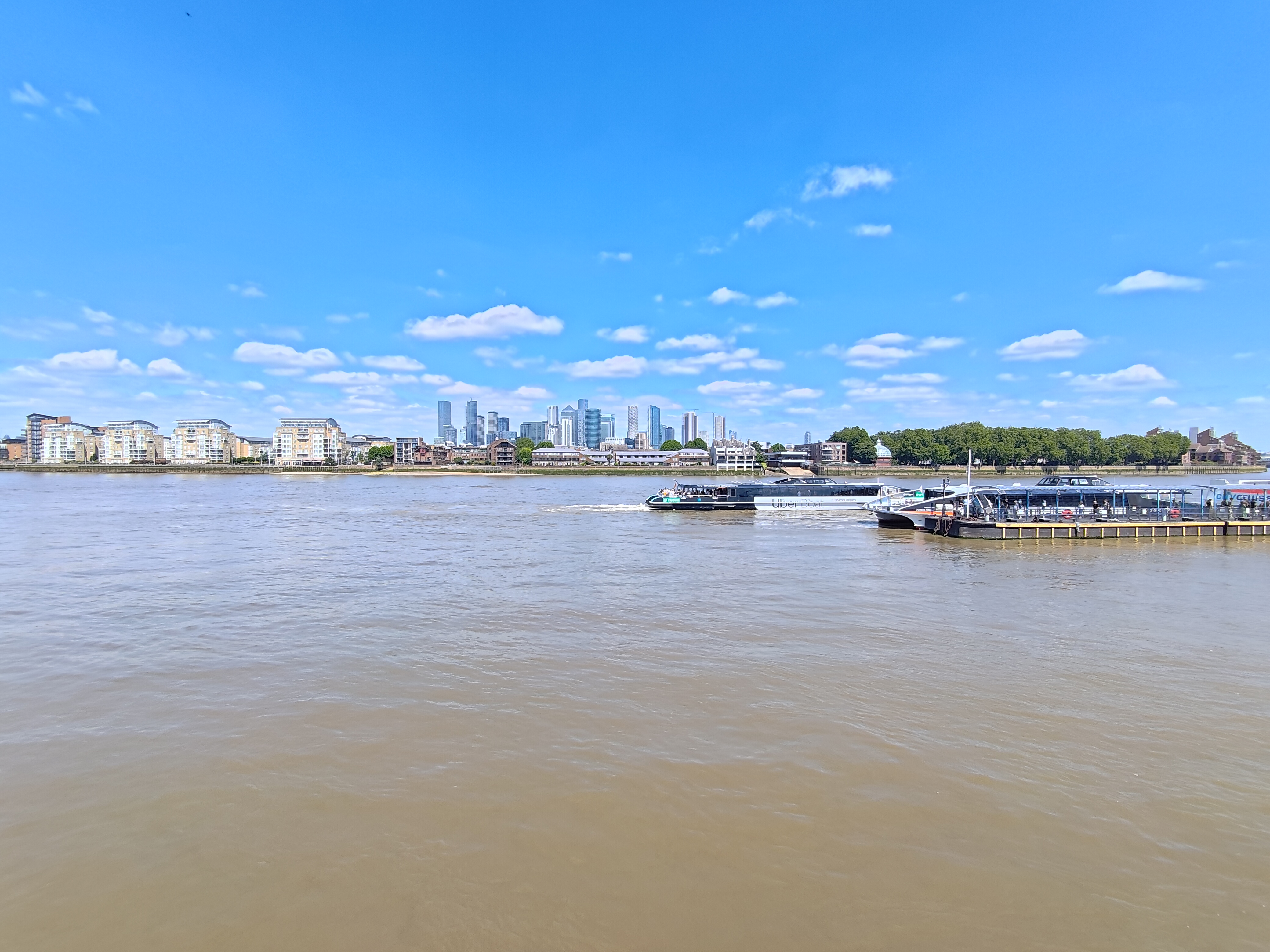







Asus Rog Phone 8: performance and audio
- Snappy Snapdragon 8 Gen 3 processor
- 12GB RAM and 256GB storage
- Speakers poorly placed for gaming
Since the Asus ROG Phone 8 is a gaming phone, you’d think that performance is an area where it aces the test. Well… you’d hope so. The phone has the new top-end Snapdragon 8 Gen 3 chip, paired with 12GB RAM and 256GB storage.
In terms of straight-up speed, the ROG is undeniably fantastic – I never encountered any stutters or issues during gameplay, and it could render the highest graphical settings and fastest refresh rates in titles like COD Mobile with no issue.
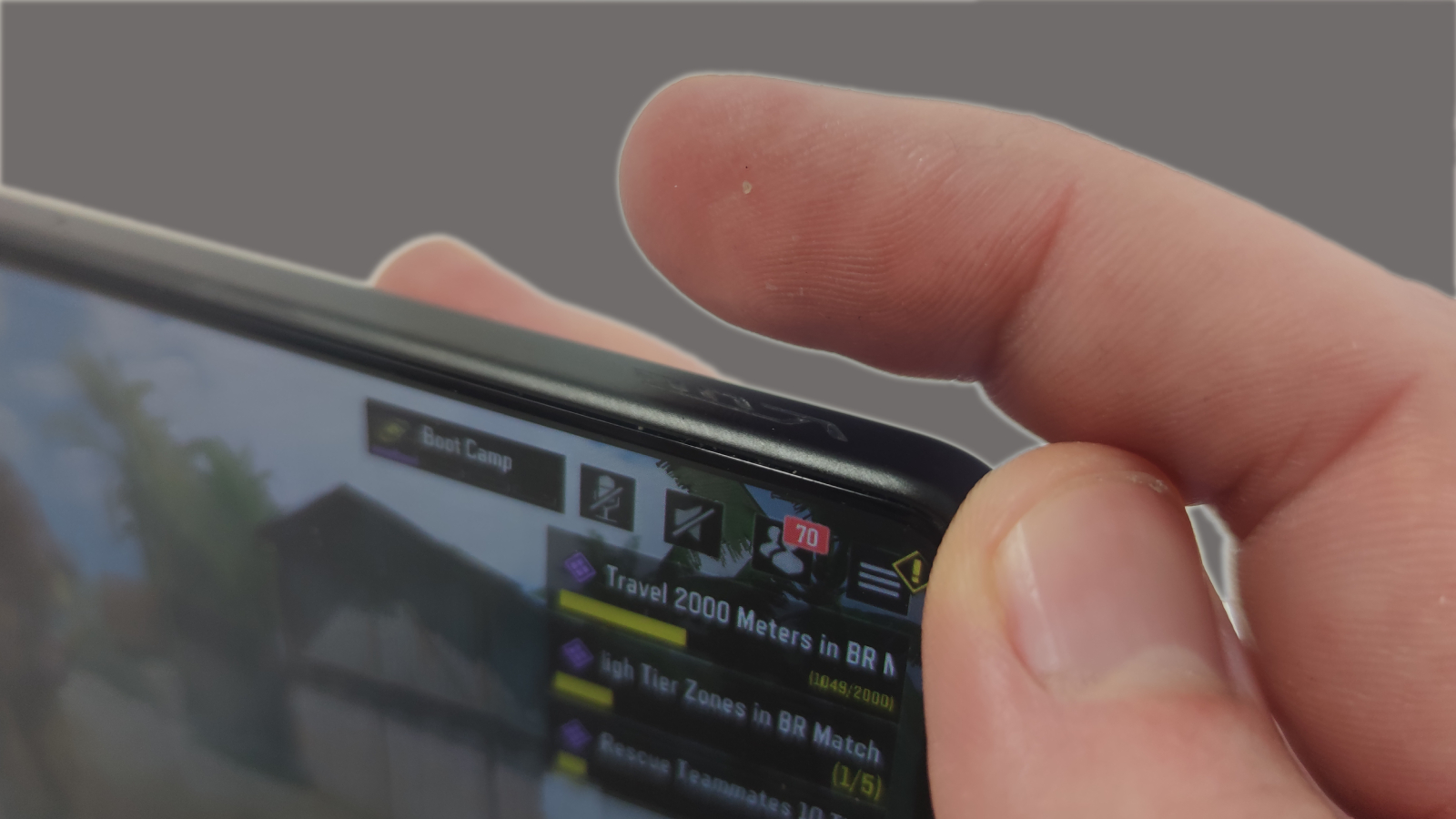
That performance was reflected in benchmarks. In a Geekbench 6 multi-core test, the phone returned a score of 6,524 – I tested it again after half an hour of gaming, to see if overheating could cause an issue, and the resultant score of 6,459 proves that it doesn't.
Notably, our tester for the Asus ROG Phone 8 Pro Edition got a score of 7,200, so the extra RAM of the highest-end versions will get you more power. But given that most mobile games are optimized to run well on any device, even low-end ones, that extra power won’t really improve your gaming experience all that much.
While the phone's performance is great on paper, I found gaming a little tiring. I’ve already discussed my issues with the ROG Phone 8's temperamental Air Triggers, but there were more problems. Notably, when you’re holding the phone horizontally, your hand blocks the speakers, so you need to use headphones to properly hear. The big size of the phone also meant I got hand ache when gaming for too long, and I'd also sometimes accidentally press the side of the device when reaching for buttons in the middle.
Oh, and gamers might like to know that you can play certain titles without having to unlock the phone – my go-to testing title, COD: Mobile, is one of these. However, features like Air Triggers don’t work unless you’ve unlocked the phone, which is a problem I kept running into.
None of these hiccups would be issues… in a non-gaming phone. However, in the ROG Phone 8, they detracted from the overall gaming experience for me. Damningly, I enjoyed my time gaming on the Samsung Galaxy A35, which I tested before this, more than I did on the ROG Phone.
- Performance score: 4 / 5
Asus Rog Phone 8 review: battery life
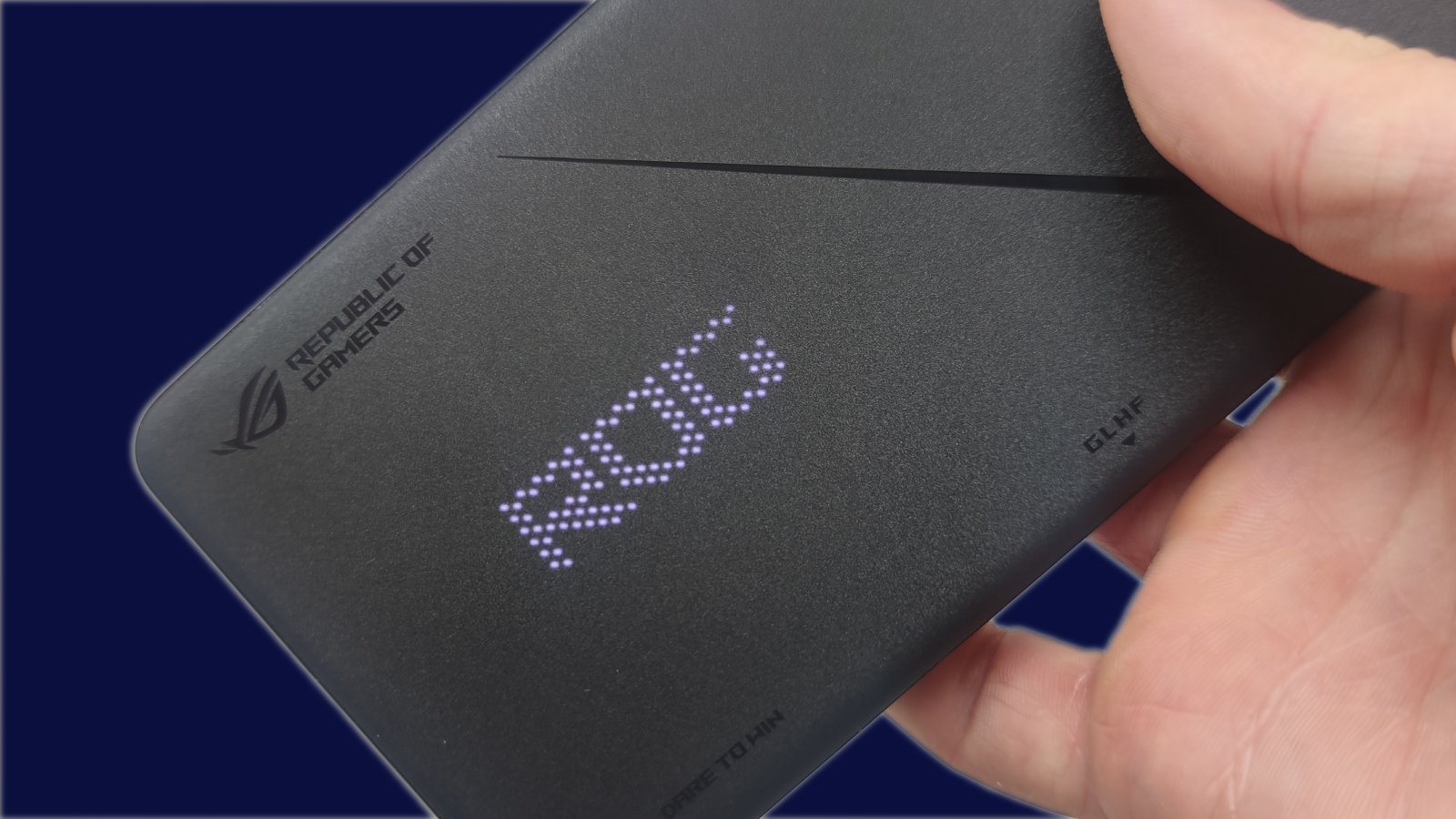
- Huge 5,500mAh battery
- Two charging ports for 65W speed
- Wireless and reverse wireless charging too
Keeping the lights on for the ROG Phone 8 is a 5,500mAh battery, which is as chunky as you’d hope for in a gaming phone like this.
If you’re planning on using the ROG Phone 8 like your average phone, then this battery is easily big enough to keep things ticking over for a whole day. Don’t worry about those extended video calls – this beast will keep you going.
When it comes to gaming, you’ll definitely get a good few hours of time out of the ROG, but I did notice that the battery was sapped quicker that on the non-gaming phones I tested prior to it – even when gaming on lower refresh rates and graphical options. That’s why the double charging ports are in play: to make sure you can charge nice and quickly. Powering is at 65W, which is lovely and fast, and you can get from empty to full in just under 45 minutes if you have a compatible charger.
There’s also 15W wireless charging, which obviously won’t be useful for powering while you’re gaming, but it's a useful addition. The same can be said for the 10W reverse wireless charging, so the 5,500mAh power pack is playing double duty as a portable power bank if you have wirelessly-charging gadgets.
- Battery score: 3.5 / 5
Should you buy the Asus ROG Phone 8?
| Attributes | Notes | Rating |
|---|---|---|
| Value | This phone costs a lot for what you're getting! | 2.5 / 5 |
| Design | A big chunky phone, but less 'gamer-y' than other gaming mobiles. | 3.5 / 5 |
| Display | A fairly standard resolution but a super-fast refresh rate. | 4 / 5 |
| Software | Asus' Android fork brings some interesting features, but it's by-the-book for the most part. | 3.5 / 5 |
| Camera | The ROG's cameras aren't anything special, but they're certainly capable. | 3 / 5 |
| Performance | The ROG has all the bells and whistles to make it super speedy. | 4 / 5 |
| Battery | The battery lasts ages if you're not gaming. Lots of charging options help, though. | 3.5 / 5 |
Buy it if...
You need a future-proof gaming phone
Few games go higher than 120Hz or require top-end chipsets, but that'll change over time, and this handset will handle new games for years to come.
You're going to buy a mobile gaming controller
While I was critical of certain gaming features of the ROG, they'll all be redundant if you're also planning to buy a gaming controller to go with your phone.
The AI wallpaper feature appeals to you
If you're a fan of generative AI then you might find the AI wallpaper feature really cool, with it generating artificial new backgrounds whenever you want it to.
Don't buy it if...
You're on a budget
This is an incredibly pricey gaming phone, and I can't recommend it to people who don't want to break the bank on their new mobile.
You find phone LEDs embarrassing
People can love or hate smartphone LED panels; if you've got a strong opposition, you'll hate the ROG's, even if it's more minimal than on some other gaming phones.
You want a small phone
I have fairly average-sized hands, and using the ROG gave me aches, so if you want a nice compact device, you won't enjoy using this Asus phone.
Asus Rog Phone 8 review: Also consider
If you're looking for another Android phone to play games on, here are some other picks worth considering:
Nubia Red Magic 9 Pro
With a lower price and similar processing power to the ROG, this is the best alternative gaming phone.
Read our full Nubia Red Magic 9 Pro review
Asus ROG Phone 8 Pro
Offering more power and more storage than the non-Pro model, the 8 Pro is reserved for super-serious gamers, though it costs more, too.
Read our full Asus ROG Phone 8 Pro review
OnePlus 12
If you want a non-gaming phone that can still handle all the top titles, then the OnePlus 12 ticks all the boxes. Plus, it's more affordable than the ROG.
Read our full OnePlus 12 review
| Asus Rog Phone 8 | Asus Rog Phone 8 Pro | Nubia Red Magic 9 Pro | OnePlus 12 | |
|---|---|---|---|---|
| Price (at launch): | £249 (around $315, AU$475) | £269 (around $330, AU$500) | £299 (around $350 / AU$520) | £299 (around $350 / AU$520) |
| Dimensions: | 160 x 74.4 x 7.6mm | 161.4 x 73.8 x 8.3mm | 165.5 x 76 x 8.3mm | 163 x 76 x 8mm |
| Weight: | 166.8g | 181g | 195g | 187g |
| OS (at launch): | Android 13 | Android 13 | Android 13 | Android 12 |
| Screen Size: | 6.5-inch | 6.5-inch | 6.72-inch | 6.67-inch |
| Resolution: | 1080x2400 | 1080x2400 | 1080x2400 | 1080x2400 |
| CPU: | Snapdragon 695 | Dimensity 930 | Snapdragon 695 | Dimensity 1080 |
| RAM: | 12GB | 8GB | 8GB | 6GB / 8GB / 12GB |
| Storage (from): | 256GB | 128GB / 256GB | 128GB / 256GB | 128GB / 256GB |
| Battery: | 5,000mAh | 5,000mAh | 5,000mAh | 5,000mAh |
| Rear Cameras: | 50MP main, 8MP ultra-wide | 50MP main, 8MP ultra-wide | 108MP main, 2MP depth sensor, 2MP macro | 50MP main, 8MP ultra-wide. 2MP macro |
| Front camera: | 16MP | 16MP | 16MP | 16MP |
How I tested the Asus Rog Phone 8
- Review test period = 3 weeks
- Testing included = Everyday usage, including web browsing, social media, photography, video calling, gaming, streaming video, music playback
- Tools used = Geekbench 5, Geekbench 6, Geekbench ML, GFXBench, native Android stats
My Asus ROG Phone 8 testing process involved a lot of gaming. That's why the test period was three weeks instead of the usual two – I got a bit distracted!
For the main testing period, though, I used the phone as though it was a regular mobile – texting, streaming movies, listening to music, spending time on social media, taking pictures and playing lots of games.
I've been testing smartphones at TechRadar for over five years, after spending time as a writer then editor of the phones section, and as such I've used plenty of other handsets. These include many gaming phones and rivals to the Asus.
First reviewed July 2024

Tom Bedford joined TechRadar in early 2019 as a staff writer, and left the team as deputy phones editor in late 2022 to work for entertainment site (and TR sister-site) What To Watch. He continues to contribute on a freelance basis for several sections including phones, audio and fitness.
